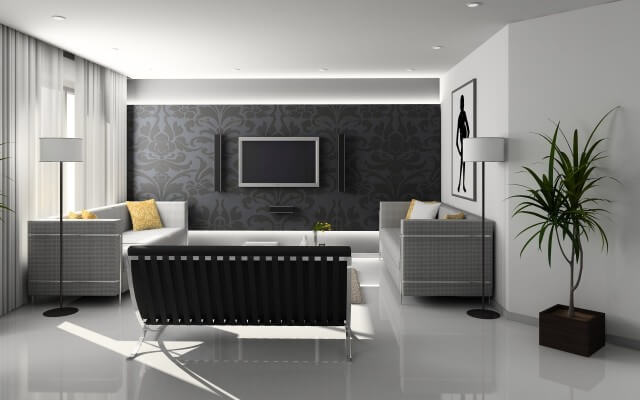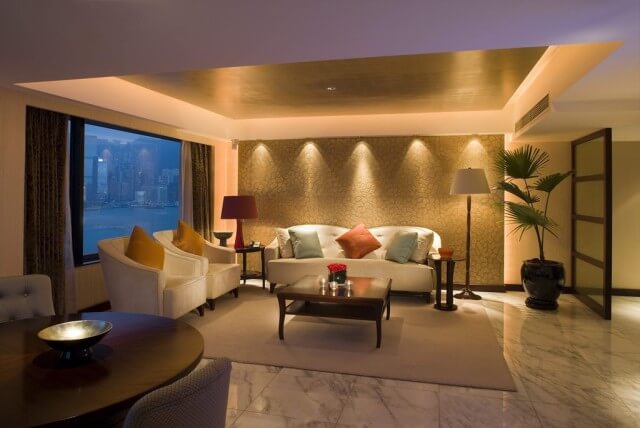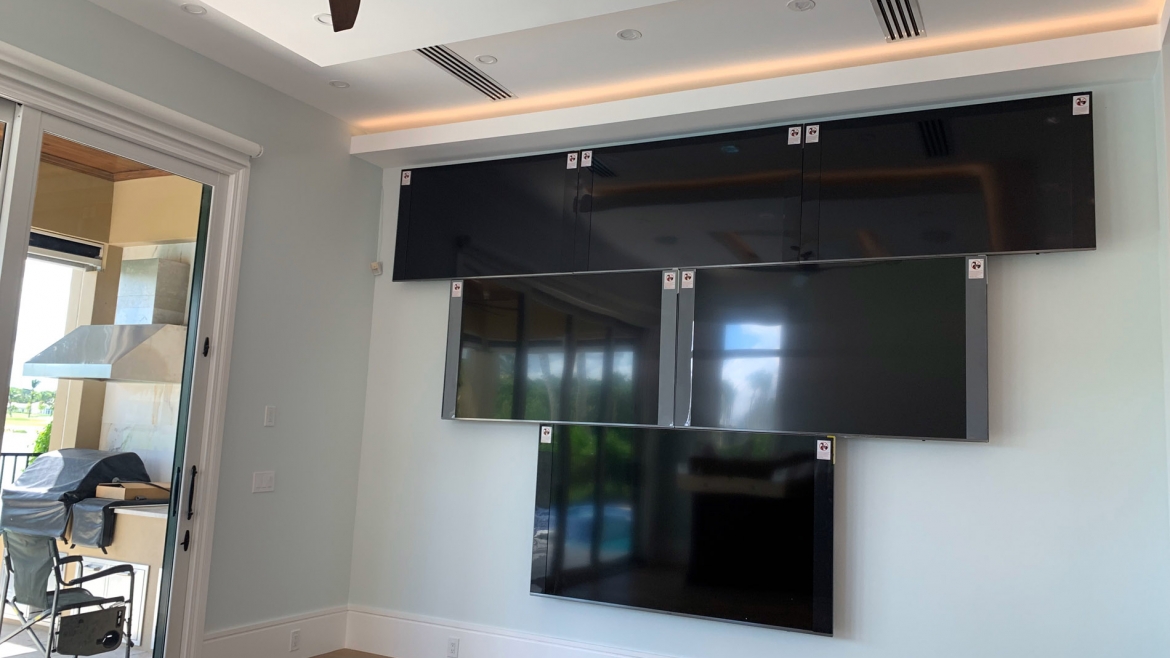When you think of remodeling your home, the living room is probably the first room you think of beautifying as it is the most versatile area of your dwelling. A warm and attractive sitting room speaks of your unique personality, making an excellent first impression on all those who spend time here.
Numerous homeowners meticulously plan to make their drawing rooms fascinating and attractive. They are also willing to invest a huge amount in home remodeling projects. However, the bewildering number of interior design options can make it tough for anyone to choose the most suitable design for the living room.
If you are planning to refurbish your family room, here are seven design elements you must consider to give this area a cohesive and trendy look.
1) Choose a Neutral Color Palette
For a head-to-toe makeover of your sitting room, start by choosing a neutral color scheme such as beige, ivory, taupe, black, gray, and shades of white. Neutral shades allow you to add bold elements to your room and highlight the furnishings and the textures.
Moreover, neutral shades work for every interior design style – modern, vintage, eclectic, and traditional, making the family room appear clean, classy, warm, and welcoming.
2) Create a Focal Point
Aesthetics is especially crucial in the living room as it is the hub of your home where you relax, congregate with your family, and entertain visitors. Moreover, designing and beautifying your living room exhibits your personal artistic sense.
A living room with a striking focal point enhances its appearance, enabling you to draw the attention of your visitors. A breathtaking view from a large window, an attractive hearth, a winding staircase, a feature wall, an architectural design, an original art piece, a vintage mirror, or a striking bookshelf can serve as a focal point for your main family room.

If watching television is one of the primary uses of your sitting room, make it the centre of attention by pairing it with a feature wall, an attractive book shelf, or the fireplace.
Regardless of the focal point you choose, when remodeling your living room arrange the furniture around it to give the area an attractive appeal. Moreover, having a seating arrangement around a focal point encourages conversations, making people feel at ease.
3) Add Layers for Comfort and Style
When remodeling your sitting room, experiment with colors, textures, and patterns. Adding layers enhances the interior décor, increases the physical comfort of the room’s occupants, and camouflages the parts of the room that make you cringe. Layers add depth to your living space and make it visually interesting.
Simple tricks such as contrasting textures and patterns can add warmth and appeal to your living room interiors. Faux fur when paired with a comfortable leather sofa can add softness to the room, making it look cozy and inviting. A nice rug on plain wooden flooring can add also depth and dimension to the interiors.
Adding a layer of textures paired with a few attractive accessories such as woven baskets can further soften the mood of the room, making it extra comfortable for its occupants. Employ a variety of textured materials such as fine-gauge, open-weave, raw silk, taffeta, and distressed velvet to amplify neutrals, making your living room an interesting place for your visitors.
4) Upgrade the flooring
Floors are the largest design surfaces of any room and hence form the foundation of a successful interior design. When remodeling your living room the flooring plays a crucial role in bringing all the interior décor elements together.
Your living room floor will be subject to maximum wear and tear owing to the routine activities in this area. Before choosing the floor tiles or carpets, consider its functionality and durability.
Another aspect to keep in mind when choosing the flooring is its effect on the mood and furnishings of the room. Select patterns and colors that complement the other elements of the interior décor. You can choose from a variety of options, namely wood, granite, slate, or marble to make your living space look elite and modern.
5) Type of furniture and its location
The living room furniture determines your personality and is a crucial tool that promotes conversations and interactions between people.
Typically, this room demands plenty of sitting arrangement with at least one comfortable designer sofa and a couple of arm chairs. In order to complete the room you need a center table, coffee tables, bookshelves, ottomans, and pouffe stools that work together in harmony, giving the area an interconnected and elegant appearance.
6)Upgrade the lighting
I will say this over and over and over. Lighting is key. Living room lights not only pep up the space but also act as a decorative accessory, highlighting the attractive features of your house.
Prepare your sitting area to serve a variety of moods by going for layered lighting. You can experiment with ambient lighting, accent lighting, and task lighting to create a visually comfortable and balanced living area.

Ambient lighting is the soft light that blankets the room without hurting the eyes. This type of lighting can be used to create a peaceful environment, comforting the occupants of the room. Recessed or track lights, coffered ceilings with led tape , chandeliers, pendants, and wall sconces can be used to create this effect.
Accent lighting is a concentrated beam of light installed to draw attention to a focal point, adding drama and elegance to the room. Spot lights, recessed lights, landscape lights, and wall lights work best for highlighting attractive artworks, vintage pieces of furniture, and architecture.
As the name suggests, you will require task lighting when you are working on a laptop, reading a book, or playing a board game with your loved ones. Table lamps, floor lamps, under cabinet lights, and pendant lights work well for living rooms.
Use a combination of the above-mentioned lighting options to create interesting effects in your family room.
7) Accessories
Accessories complement the furniture and the design of a living room, enhancing its overall appeal. Accessorizing doesn’t demand expert interior designing skills. Just follow your tastes and experiment with a range of attractive elements such as vintage vases with fresh flowers, art pieces, cushions, curtains, mirrors, candle stands, ceramic displays, or anything that appeals to you. The living room is the most important area of your house where you spend long hours conversing with your loved ones, watching television, or reading. Consider the above-mentioned tips when remodeling this room to render an attractive appeal to it.

